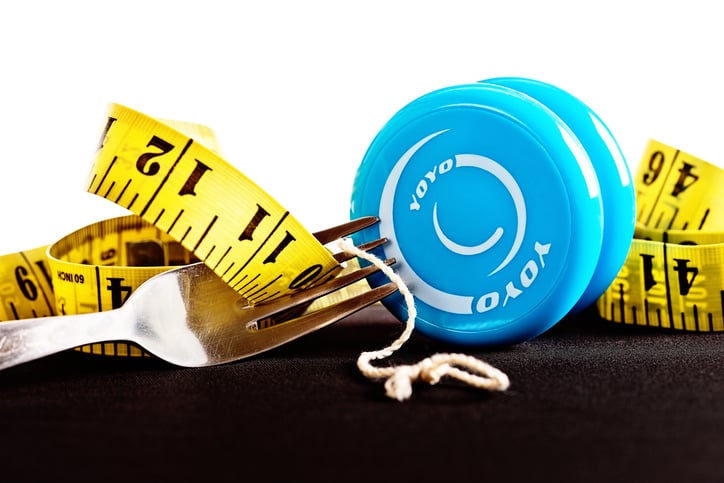Ask the Coaches: How G-Flux Helps You Burn More Flab

Q: I feel that because of my past chronic, yo-yo dieting, in addition to my increasing age, I’m suffering from a sluggish metabolism. I’m currently trying to lose 20 pounds (again), only this time it’s coming off very slowly. Are there any simple tricks I can use to “repair” the damage I may have done to my metabolism and get things going again?
-Helen
Hi Helen! Thanks for taking the time to reach out to us.
Yes, it’s true that chronic dieting, especially yo-yo dieting, can do some real damage to your metabolism, but I do have a great “metabolism-repairing” solution to share with you today, and it involves increasing something known as “G-flux.”
If you’ve never heard of G-flux, here’s a simple formula for increasing it: Eat more; exercise more. Sounds pretty simple, but let’s take a deeper look.
Exercise increases metabolism. Eating increases metabolism. The trick is learning to balance the two, so you still create a negative calorie balance.
Allow me to explain…
Super Belly Fat Burning Combo:
Sedentary people (i.e., folks who just sit around and don’t exercise) have painfully slow metabolisms. This is due to many hormonal factors resulting from a lack of exercise along with the fact that these individuals never really “teach” their bodies to burn additional calories.
Likewise, chronic dieters share the same plight. When you chronically under-eat, your metabolism slows down as a starvation protection mechanism, and the oh-so-slow metabolism blues start a-playin’.
On the contrary, exercise and eating are metabolism boosters. That being said, it’s not very likely that eating more by itself will ever do wonders for your fat-loss efforts.
But when you combine eating more with a high caloric burn via exercise, you get the best of both worlds.
For example, let’s say your basal metabolic rate allows you to burn 2,000 calories a day. Knowing this, you go on a diet and begin eating 1,500 calories a day, putting you 500 calories in the hole. Now, on the surface, a 500-calorie deficit would appear to be a good thing, but unfortunately, you’ve done your metabolism NO favors here. In fact, under-eating only decreases metabolism with each passing day—as you’ve experienced.
Special Offer:Get MetaboGreens up to 20% OFF (very limited inventory)
So, “dieting” as we know it is not the method of choice for creating a calorie deficit, especially when trying to repair your metabolism.
Now let’s take a similar scenario. You burn 2,000 calories a day, but instead of “dieting,” you start eating 300 calories MORE each day, and you also burn 800 extra calories through exercise. The result? The SAME 500-calorie deficit (2,800 calories burned, 2,300 calories consumed) but you increase your metabolism through eating and exercising more. Hello!
That’s the power of G-flux. Apply the concept, and watch your metabolism skyrocket!
-Coach Joel
PS- If you have any health questions, please feel free to comment below. Our team of coaches will answer as many as possible.







